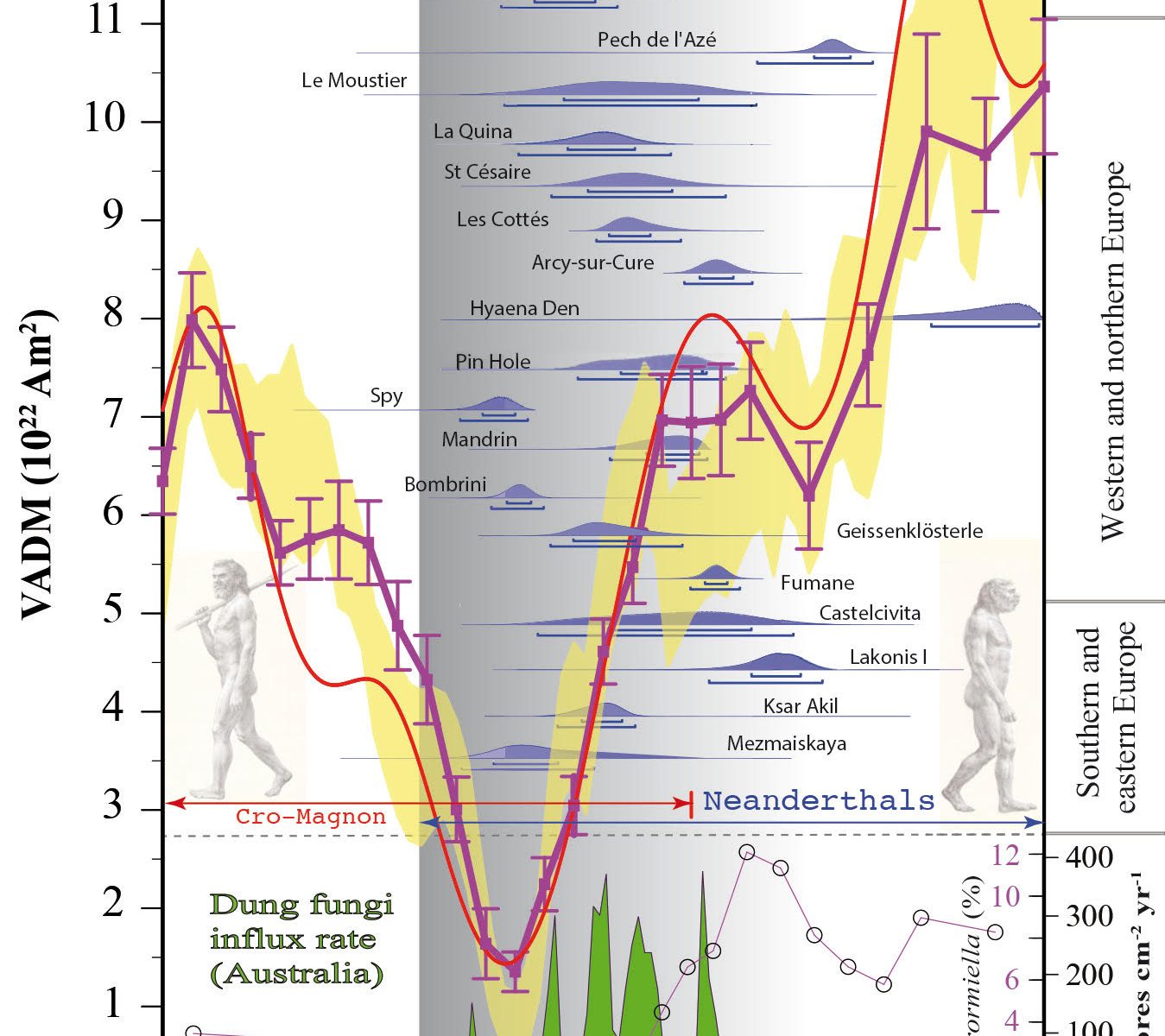The role of geomagnetic field intensity in late Quaternary evolution of humans and large mammals
A recent study by James Channell and L. Vigliotti published in Reviews of Geophysics outlines possible linkages between the intensity of the Earth’s magnetic field and human and mammal evolution.
The strength of Earth’s magnetic field in the past, recorded by rocks and sediments, provides a proxy for past flux of ultra-violet radiation (UVR) to Earth’s surface due to the role of the field in modulating stratigraphic ozone. About 40 thousand years ago, mammalian fossils in Australia and Eurasia record an important die-off of large mammals that included Neanderthals in Europe. In the Americas and Europe, a large mammalian die-off appears to have occurred ~13 thousand years ago. Both die-offs can be linked to minima in Earth’s magnetic field strength implying that UVR flux variations to Earth’s surface influenced mammalian evolution. For the last ~200 thousand years, estimates of the timing of branching episodes in the human evolutionary tree, from modern and fossil DNA and Y-chromosomes, can be linked to minima in field strength which implies a long-term role for UVR in human evolution. New fossil finds, improved fossil dating, knowledge of the past strength of Earth’s magnetic field, and refinements in the human evolutionary tree, are sharpening the focus on a possible link between UVR arriving at the Earth’s surface, magnetic field strength, and events in mammalian evolution.
The full article can be read here: https://agupubs.onlinelibrary.wiley.com/doi/epdf/10.1029/2018RG000629
